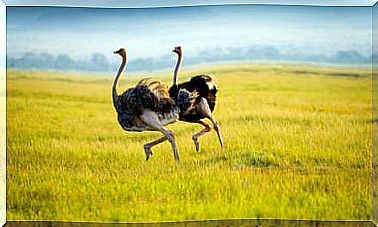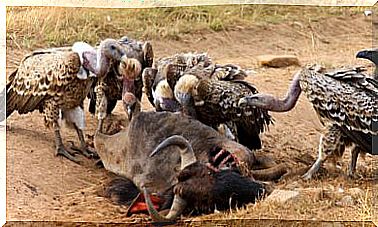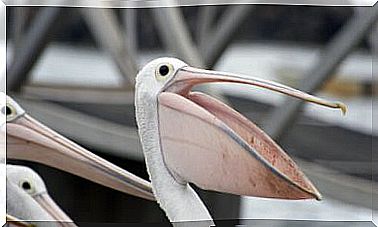Main Characteristics Of The Marsh Alligator
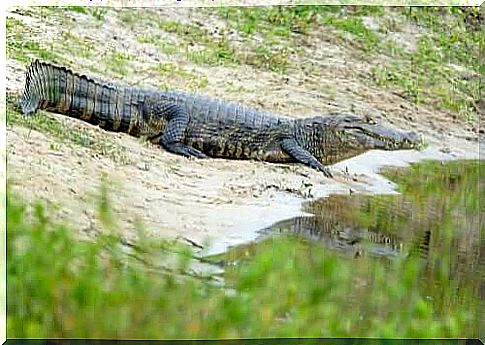
The alligator-of-the-swamp is a species of alligator originating in South America, the family Alligatoridae and the order Crocodilia . Therefore, it is related to crocodiles and gharials.
Alligator Characteristics
The alligator-of-the-swamp is also known as alligator-do-paraguay. This species has a long, narrow head, with a smaller muzzle width at the base.
The skin covering the dorsoventral body is practically impermeable. Another striking feature is the muscular tail that these species have.
With regard to the coloration of species, it differs in young and adults. The young have an olive tone with black spots. On the other hand, adults have a black color on the back.
Males can reach 2.60 meters, although there are records of some specimens that reached three meters.
Regarding the reproductive period, males do a dance in which they squirm and pirouette in the water. They have a very specific ritual that takes place in the summer months.
Males who manage to impress females can approach them after the dance.
The breeding season is between the months of December and April. The female lays between 20 and 40 eggs. She places them in a nest, in which she uses the organic waste and materials she finds, with a diameter of about 130 centimeters.
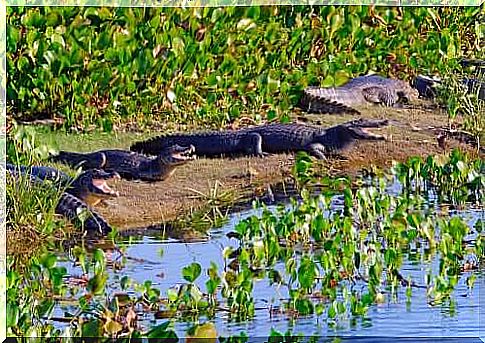
Habitat and distribution
Currently, this species resides in different countries in South America. Specifically, it can be found in Argentina, Bolivia, Brazil and Paraguay.
Alligators, like crocodiles and gharials, have always been associated with water. Therefore, in the different places where these specimens can be found, they prefer clean water from rivers, estuaries and lagoons.
On the other hand, the marsh caiman also sunbathe on the banks of estuaries or rivers. In Brazil, they live peacefully with the capybaras.
Conservation status of the wetland alligator
The wetland alligator was listed as an animal of least concern. Currently, the number of specimens that make up their populations is unknown.
The main threat that this species has suffered and is suffering is persecution for its hide. In the 1970s, the populations of alligators in the marsh were decimated, mainly by poaching and illegal trade.
In the past, young specimens were a precious hunting object during the 19th century and the first half of the 20th century. The leather was extracted from their skin. Therefore, they were declared as protected species.
Preservation Strategies
Governments in several countries have developed different conservation strategies to support species recovery. These are strategic business proposals in which there is commercial benefit, with the objective of encouraging the population to conserve the species.
farms
In countries like Argentina, one initiative is the ‘Jacaré Project’. The objective is to raise eggs to favor the sustainable use of the country’s wetlands. Thus, local businesses are also supported.
The creation of eggs consists of catching them after being laid by animals in nature. After picking up the eggs, they are artificially hatched and the chicks are raised in a controlled environment.
Thus, one of the critical factors is avoided, since Crocodilia species suffer from high embryo mortality. The offspring that survive suffer great predation during the first year of life.
They can also develop stress illnesses in response to the cold in the first winter of life, or also to the flooding of their nests.
When the puppies are relatively large, they return to nature. For this, in regions where there is a lower density of the species, a greater number of samples is introduced.
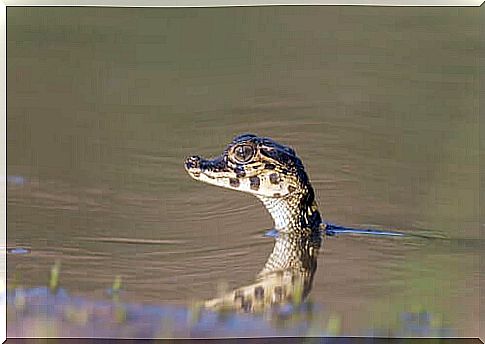
negative factors
Among other measures, the areas where the nests are located must be protected. It was observed that females abandon them due to different disturbances caused by human presence.
There are other problems caused by human beings. For example, the loss of habitat caused by channeling estuaries, which causes them to dry up.
The marsh alligator belongs to a group of species that, despite having been in danger years ago, was rescued thanks to the recovery tactics implemented.
